Are you looking for a powerful IT Service Management (ITSM) solution that can streamline your organization's operations? If you are weighing the options between SysAid vs. Jira Service Management, you've landed at the perfect destination.
In this blog post, we’ll conduct a thorough ITSM tools comparison, exploring SysAid and Jira Service Management’s distinct features, advantages, and potential drawbacks. But that's not all – we have an exciting alternative in store for you as well! Get ready to discover InvGate Service Management, a powerful service desk software that might just be the perfect fit for your organization's ITSM needs.
Let's dive in and analyze this comparison to find the ideal ITSM solution for your organization!
Table of contents
- TL;DR
- What is SysAid?
- What is Jira Service Management?
- Considering InvGate Service Management as an ITSM solution alternative
TL;DR
- SysAid is a cloud-based ITSM platform that caters to mid-sized teams and well-established IT departments. It is praised for its knowledge base organization, global customer support, and customization options. Users have also manifested that the user interface can be outdated and inconsistent, the support response can be slow and the system change can be challenging, and that prices can be unreasonably high.
- Users highlight Jira Service Management's sprint planning and task assignment capabilities, as well as its ticketing system and end-user portal. However, they dislike the migration process, its limitations in reporting, a steep learning curve, and the reliance on additional plugins.
- InvGate Service Management provides robust self-service functionalities, such as a user-friendly portal, an extensive IT service catalog, and a knowledge base. These features empower end-users to independently resolve common issues, access various IT services, and utilize self-help resources, thereby reducing the workload on IT staff.
We tried to be as thorough as possible, but if you don't have enough time to read it through and through, here's (another) TL;DR: InvGate Service Management can do everything we say here, and you can test it right away for free for 30 days.
Most looked-at features by buyers
When evaluating IT Service Management solutions, potential buyers focus on specific features that align with their organization's needs, underscoring the importance of understanding these desired attributes to make well-informed decisions.
Let's explore the primary factors that prospective buyers commonly take into account when comparing ITSM tools.
- Seamless integration capabilities - Integration with other systems and applications is critical for smooth data flow and process automation, enhancing efficiency and providing a unified user experience.
- Efficient IT Asset Management - Users prioritize software with robust ITAM capabilities to maintain accurate inventories and optimize resource utilization within their organizations.
- User-friendly experience and interface - Buyers highly value ease of use and an intuitive interface, as it promotes user adoption and productivity. Mobile accessibility is also crucial for organizations with remote or mobile workforces.
- Optimized IT service catalog - Streamlined IT service catalogs are highly valued, providing a centralized platform for users to request specific IT services or resources, simplifying service requests and enhancing visibility.
- Comprehensive Ticket Management solution - A robust Ticket Management System within the help desk software is considered essential by buyers. This feature facilitates effective tracking, assignment, and resolution of customer inquiries and support requests.
- Self-service portal and knowledge base - Buyers highly value a self-service portal that empowers end-users to independently resolve common issues and find relevant information without direct assistance.
- Customization and flexibility - Buyers seek software solutions with ample customization options to align the platform with their business needs. This flexibility ensures the software can adapt to their unique workflows and processes, enhancing user satisfaction and overall effectiveness.
- Insightful reporting - Buyers look for help desk software with powerful reporting tools like dashboards and reports, providing valuable insights into their IT operations and performance for informed decision-making and continuous service improvement.
- Scalability - Buyers prioritize solutions that can adapt to changing needs and accommodate customization, allowing organizations to tailor the software to their unique business requirements.
- Support automation and Workflow Management - Automation capabilities are actively sought after by buyers to optimize routine tasks such as ticket routing, approvals, and escalations, contributing to increased efficiency and productivity.
- Pricing and support - Cost-effectiveness, including licensing models, subscription plans, and additional costs for features or users, is a significant consideration for buyers. Reliable customer support, comprehensive documentation, and accessible training resources are also crucial factors.
- ITIL compliance - Adhering to ITIL best practices is a priority for many organizations, leading buyers to prioritize solutions that support ITIL processes like Incident Management, Problem Management, Change Management, and Asset Management.
What is SysAid?
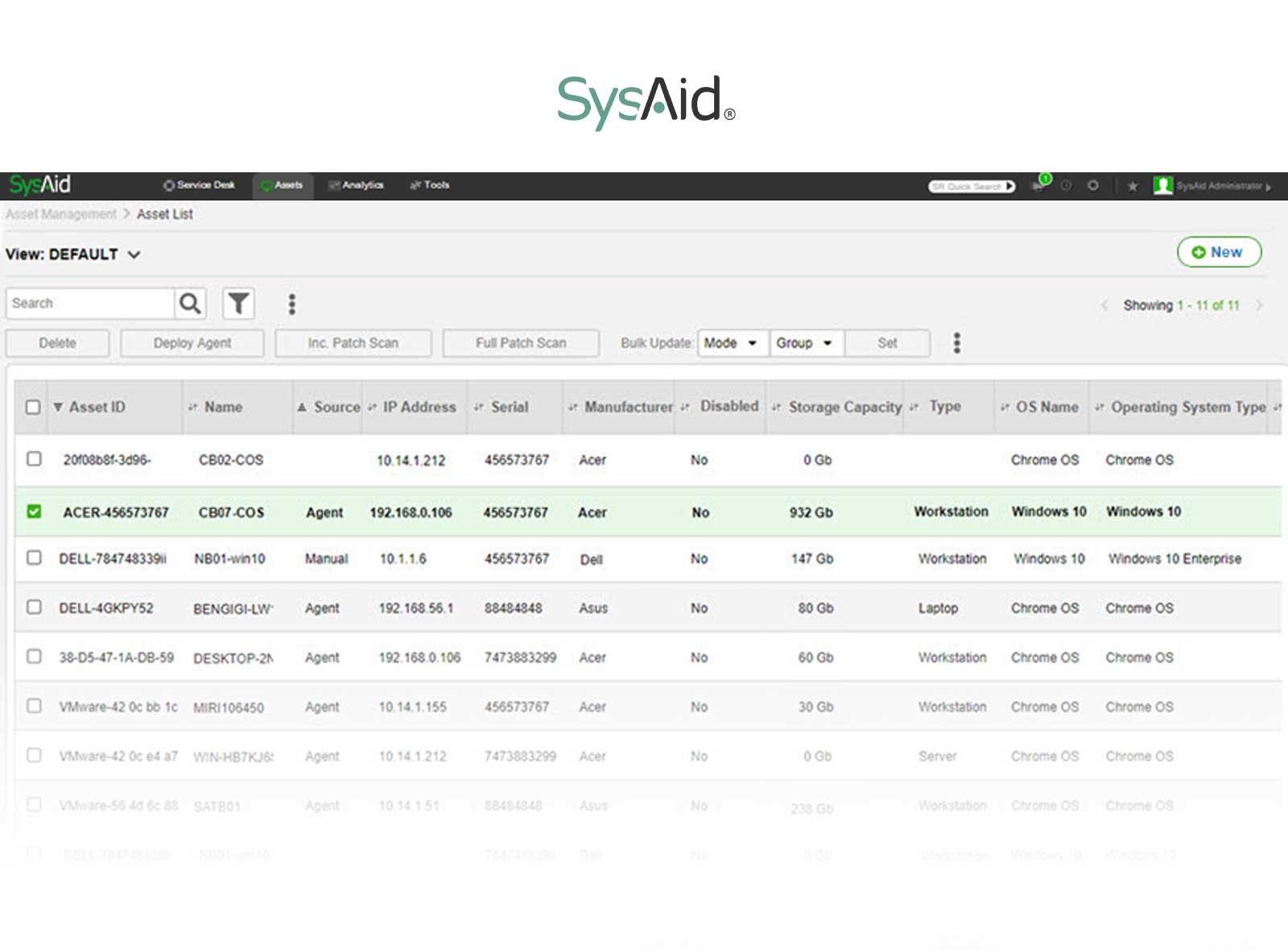
SysAid, a product of SysAid Technologies Ltd., is an advanced IT Service Management platform that operates on the cloud. It is specifically designed to empower mid-sized teams and well-established IT departments, offering them enhanced authority over their service desk operations. At the core of SysAid's features are automation, user experience improvement, and a wide array of functionalities, all aimed at enabling IT professionals to streamline their processes, boost overall productivity, and give priority to critical tasks, thereby contributing to the achievement of business success.
SysAid Technologies Ltd., founded in 2002 and headquartered in Toronto, Canada, functions as an ITSM company and has a dedicated team of over 100 experts. Their specialization lies in providing highly effective solutions for IT Incident Management, problem-solving, Change Management, and service requests. Their ultimate mission revolves around assisting organizations in optimizing their IT operations and attaining greater levels of efficiency.
What users like from SysAid
SysAid's positive reputation, as evident from Gartner reviews, highlights various advantages praised by its users. Let's explore these highlighted benefits.
- Knowledge base organization - SysAid's knowledge base is thoughtfully designed, promoting better organization and easy accessibility to information.
- Customization options - Users highly appreciate the extensive range of customization choices, empowering them to tailor the software according to their specific needs and preferences. This includes the ability to incorporate knowledge base articles, fostering knowledge sharing within the organization.
- Responsive GUI - SysAid's Graphic User Interface (GUI) promptly addresses issues, ensuring a smooth and efficient user experience.
- User-friendly interface - With an intuitive and user-friendly interface, SysAid allows users to navigate effortlessly and maximize the software's capabilities.
- Reporting capabilities - The platform offers robust reporting features that provide comprehensive insights into ticket performance. This empowers users to make data-driven decisions and optimize their service desk operations.
- Global customer support - The tool prioritizes a customer-centric approach and offers global customer support, actively seeking and incorporating user feedback beyond borders.
- Email integration - SysAid seamlessly integrates with email, facilitating effective communication with end users and encouraging collaboration for efficient issue resolution.
- SSO and AD integration- By integrating Single Sign-On (SSO) and Active Directory (AD), the software simplifies user authentication and access management, enhancing both security and user convenience.
What users don’t like from SysAid
SysAid IT Service Management, despite its strengths, has faced criticism from customers, as documented by reputable sources like Gartner. Let's delve into some of the concerns raised by users.
- Challenges with ticket updates and landing page customization - Users encounter difficulties when updating tickets, leading to workflow inefficiencies. Similarly, customizing the landing/login page proves to be challenging, impeding desired branding and personalization efforts.
- Pricing concerns - Some users consider SysAid's pricing to be unreasonably high and encounter features that do not perform as expected, leading to a lack of reliability and frustration.
- Limited customization options - Certain users feel constrained by the limited customization choices available in specific areas of the software, restricting their ability to tailor SysAid according to their unique needs and preferences.
- Administrator restrictions and reporting limitations - The software imposes limitations on the number of administrators allowed, which can be restricting for organizations with larger teams. Furthermore, the lack of comprehensive reporting options hampers users' ability to gather and analyze data effectively.
- Challenges in modifying settings - Users find it difficult to modify settings without unintentionally disrupting other configurations, leading to disruptions and complexities in the system setup and administration process.
- Slow support response and challenging system change - Users report experiencing slow response times from the support team, resulting in delays in issue resolution. Additionally, system changes are described as frustrating and cumbersome, leading to a negative user experience.
- Incomplete features - Specific features, such as the Configuration Management Database (CMDB) and license tracking, are reported to be incomplete or not fully functional, falling short of user expectations and hindering optimal IT management practices.
- Outdated and inconsistent user interface - The user interface receives criticism for being outdated and inconsistent, exhibiting varying styles within the same product. This inconsistency undermines the user experience and creates difficulties in terms of ease of use.
- Integration and AI/automation limitations - Users express dissatisfaction with SysAid's limited integration capabilities, making it challenging to integrate with other systems seamlessly. Moreover, the absence of advanced AI capabilities and automation features hampers efficiency and productivity gains.
What’s SysAid’s argument over Jira Service Management?
SysAid stands as a robust ITSM platform that puts forth compelling advantages over Jira Service Management.
- Knowledge base organization - SysAid emphasizes its thoughtfully designed knowledge base, which promotes better organization and easy accessibility to information. This allows users to efficiently manage and share knowledge within the organization, fostering collaboration and improving service delivery.
- Extensive customization options - SysAid puts forth its extensive range of customization choices, empowering users to tailor the software to their specific needs and preferences. By incorporating knowledge base articles and other features, SysAid ensures a personalized experience that aligns with each organization's unique requirements.
- Responsive GUI and user-friendly interface - SysAid highlights its responsive Graphic User Interface (GUI), which promptly addresses issues and ensures a smooth user experience. The platform's user-friendly interface allows users to navigate effortlessly, maximizing the software's capabilities and enhancing productivity.
- Robust reporting capabilities - SysAid emphasizes its robust reporting features, offering comprehensive insights into ticket performance. This data-driven approach empowers users to make informed decisions and optimize their service desk operations, leading to improved efficiency and customer satisfaction.
- Global customer support and email integration - SysAid emphasizes its customer-centric approach, offering global customer support and actively seeking user feedback worldwide. The seamless integration with email facilitates effective communication with end users and encourages collaboration for efficient issue resolution.
- SSO and AD integration - SysAid highlights its integration of Single Sign-On and Active Directory, simplifying user authentication and access management. This enhances both security and user convenience, ensuring a seamless and secure user experience.
What is Jira Service Management?
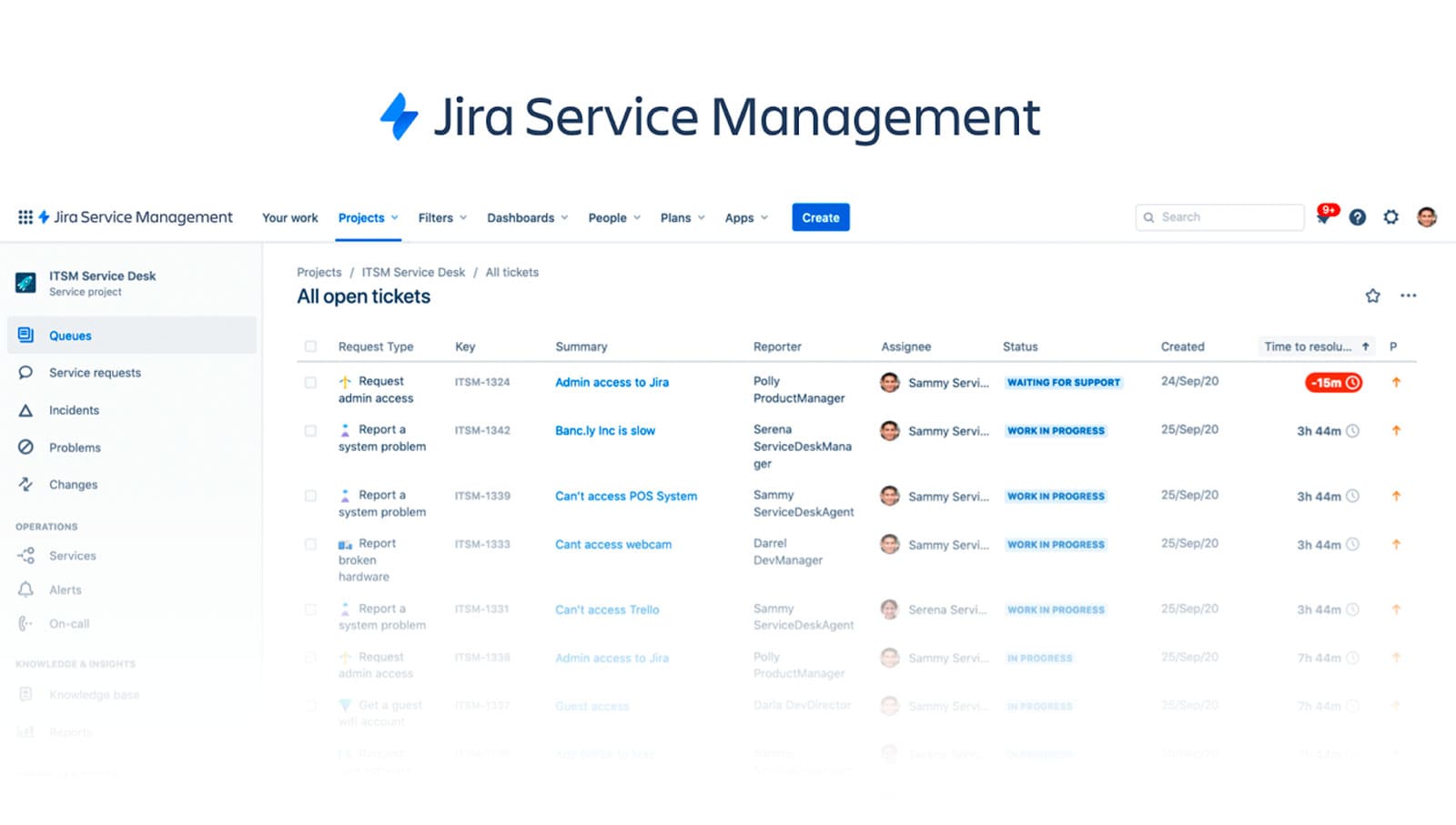
Jira Service Management is a specialized platform designed for IT Service Management. It offers organizations an efficient solution to streamline their service desk operations. With its robust features and user-friendly interface, Jira Service Management empowers businesses to optimize service delivery and enhance customer satisfaction. It currently provides a cloud-based service option, enabling organizations to take advantage of cloud computing for their Service Management needs.
Atlassian, the company behind Jira, was founded in 2002 by Mike Cannon-Brookes and Scott Farquhar in Sydney, Australia. Since its establishment, the company has grown significantly and expanded its global footprint by establishing offices in various countries, including the United States, Netherlands, Japan, and the Philippines.
Specializing in tailor-made software and tools for developers and project managers, Atlassian has an extensive product portfolio that includes well-known offerings such as Confluence, Bitbucket, and Trello. These versatile tools have gained widespread recognition in the industry and cater to diverse requirements, spanning project management, issue tracking, content collaboration, code management, and team facilitation.
What users like from Jira Service Management
Jira Service Management has garnered customer praise, earning recognition from reputable sources like Gartner and G2 for its numerous positive attributes. Here are some of the acknowledged benefits.
- User-friendly interface - Users find great satisfaction in the intuitive interface of Jira Service Management, which significantly improves Incident and Request Management processes.
- Enhanced user portal for self-service - The platform offers an upgraded user portal, enhancing the self-service experience and facilitating incident self-assessment. Users can rate the overall process upon issue resolution, providing valuable feedback for continuous improvement and bolstering customer satisfaction.
- Efficient ticketing system - Jira Service Management's ticketing system and customizable workflows simplify task management, ensuring smooth operations and improved efficiency.
- Comprehensive task details and advanced filtering - Users highly value the platform's capability to furnish in-depth task information, granting a thorough understanding of each task. Moreover, Jira Service Management has powerful filtering features, allowing users to search and organize tasks based on specific criteria.
- Streamlined sprint planning and task assignment - Jira Service Management optimizes sprint planning and simplifies task assignment by seamlessly integrating with collaboration platforms such as Slack and Teams. The Kanban view serves as a centralized hub for task management, while the tagging function facilitates organizing tasks tailored to each project.
- Flexible and affordable pricing options - Jira Service Management presents a variety of pricing choices, including a free plan suitable for up to 3 users with 2 GB storage. The cloud-hosted option offers a reasonable base price, making it accessible to organizations of all sizes.
What users don’t like from Jira Service Management
While Jira Service Management possesses numerous strengths, it is not exempt from customer concerns and dislikes, as observed in evaluations conducted by reputable sources like Gartner and G2. The following issues have been identified.
- Complex migration process - Transitioning to Jira Projects can be challenging and may necessitate a separate user subscription, adding complexity to the migration.
- Limited and intricate integrations - Users have noticed a perceived lack of available integrations, leading to the need for custom integrations. Certain users have faced difficulties when attempting to integrate the platform with specific tools.
- Dependence on additional plugins - Users have expressed the need for supplementary plugins to access basic features, and some have encountered challenges in achieving GDPR compliance (General Data Protection Regulation).
- Steep learning curve - Due to the platform's complexity and the necessity to learn and adapt to its functionalities, users may require assistance to become proficient in utilizing the platform and its features.
- Difficulties in task tracking and reporting - Users have encountered obstacles in tracking multiple tasks, generating reports, and creating dashboards.
- Challenges with Atlassian support - Users have voiced difficulties when interacting with Atlassian support, which has led to some concerns in their experience with the platform.
- Less user-friendly interface - Some users find the platform less intuitive, especially external customers engaging with the system compared to alternative options.
What’s Jira Service Management’s argument over SysAid?
Jira Service Management presents a compelling case against SysAid by showcasing its most standout features.
- User-friendly interface and enhanced user portal - Jira Service Management focuses on its intuitive interface and enhanced user portal, designed to improve Incident and Request Management processes. The user-friendly interface enables efficient navigation, while the upgraded portal enhances the self-service experience, empowering users to assess incidents and provide valuable feedback.
- Efficient ticketing system and Task Management - Jira Service Management highlights its efficient ticketing system and customizable workflows, simplifying Task Management and streamlining operations.
- Comprehensive task details and advanced filtering - Jira Service Management emphasizes its capability to provide in-depth task information, granting users a thorough understanding of each task. The platform's powerful filtering features enable users to search and organize tasks based on specific criteria, enhancing task visibility and management.
- Streamlined sprint planning and collaboration integration - Jira Service Management showcases its streamlined sprint planning process and seamless integration with collaboration platforms like Slack and Teams. This integration facilitates effective communication and collaboration, promoting efficient issue resolution and project management.
- Flexible and affordable pricing options - Jira Service Management highlights its range of pricing choices, including a free plan suitable for small teams. The accessible cloud-hosted option with reasonable pricing ensures that organizations of various sizes can leverage the platform's capabilities without excessive financial burden.
Considering InvGate Service Management as an ITSM solution alternative

In the competitive landscape of ITSM, SysAid and Jira Service Management are prominent rivals. However, it's crucial to consider alternative solutions that align closely with your organization's unique needs. In this context, InvGate Service Management emerges as an enticing and worthy option that merits careful consideration.
Let's explore the beneficial features of InvGate Service Management, making it a valuable and fitting choice for meeting your ITSM requirements.
Designed for ITSM and ESM
InvGate Service Management is purpose-built for ITSM while seamlessly extending its capabilities to Enterprise Service Management (ESM). It empowers operational departments to improve processes and embrace the benefits of digital transformation, promoting streamlined workflows and comprehensive digital initiatives across all departments.
Simplified setup and configuration
InvGate Service Management streamlines the setup and configuration process by employing a no-code/low-code approach, ensuring straightforward implementation and enabling users with varying technical expertise to adopt it effortlessly. Its robust ITSM capabilities are quickly leveraged through straightforward configuration options.
Empowering self-service capabilities
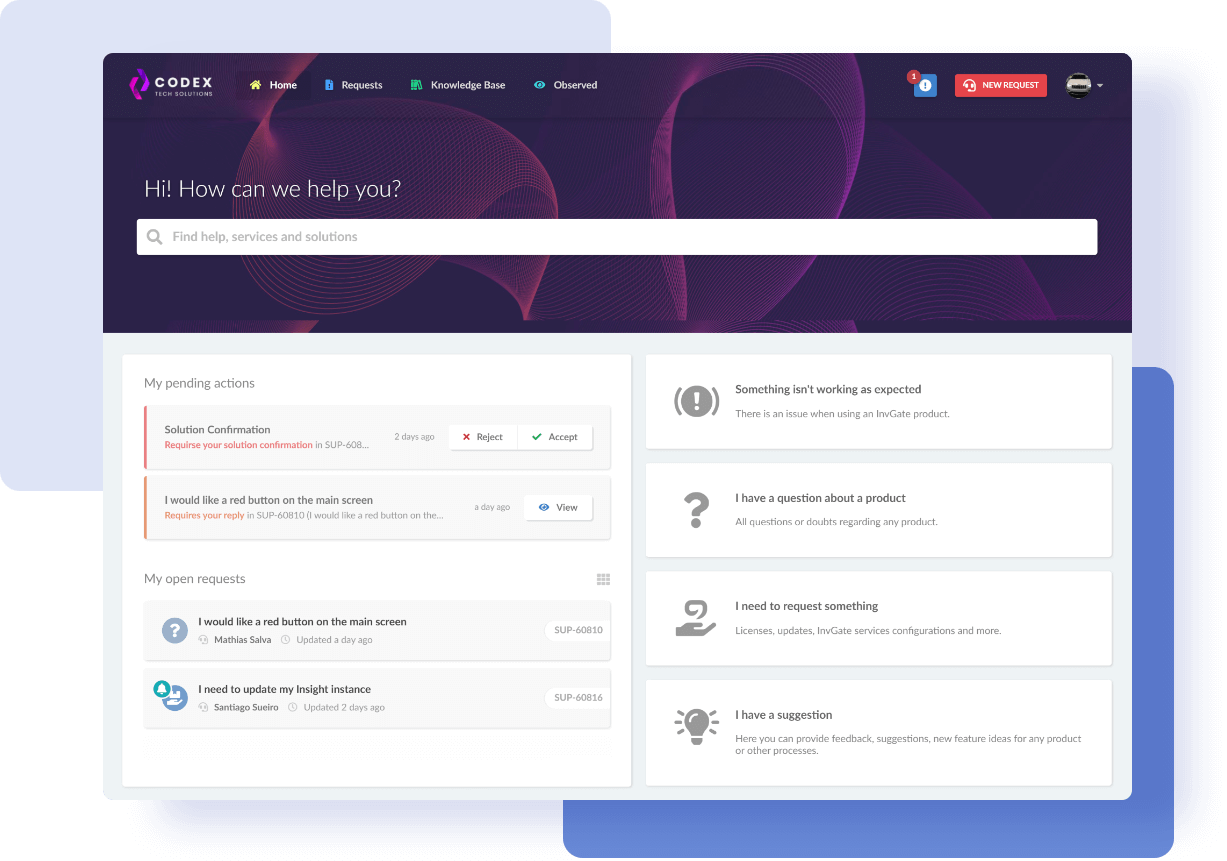
InvGate Service Management empowers end-users with a user-friendly portal, an extensive IT service catalog, and a knowledge base, enabling independent resolution of common issues, access to IT services, and self-help resources. This significantly reduces the burden on IT staff.
Cost-effective solution
InvGate Service Management offers a cost-effective solution without compromising functionality, presenting a comprehensive range of ITSM features at a competitive price. This makes it an attractive option for organizations seeking affordability without sacrificing capabilities. In comparison to alternatives like SysAid and Jira Service Management, InvGate Service Management strikes an optimal balance between cost and functionality.
Exceptional user experience
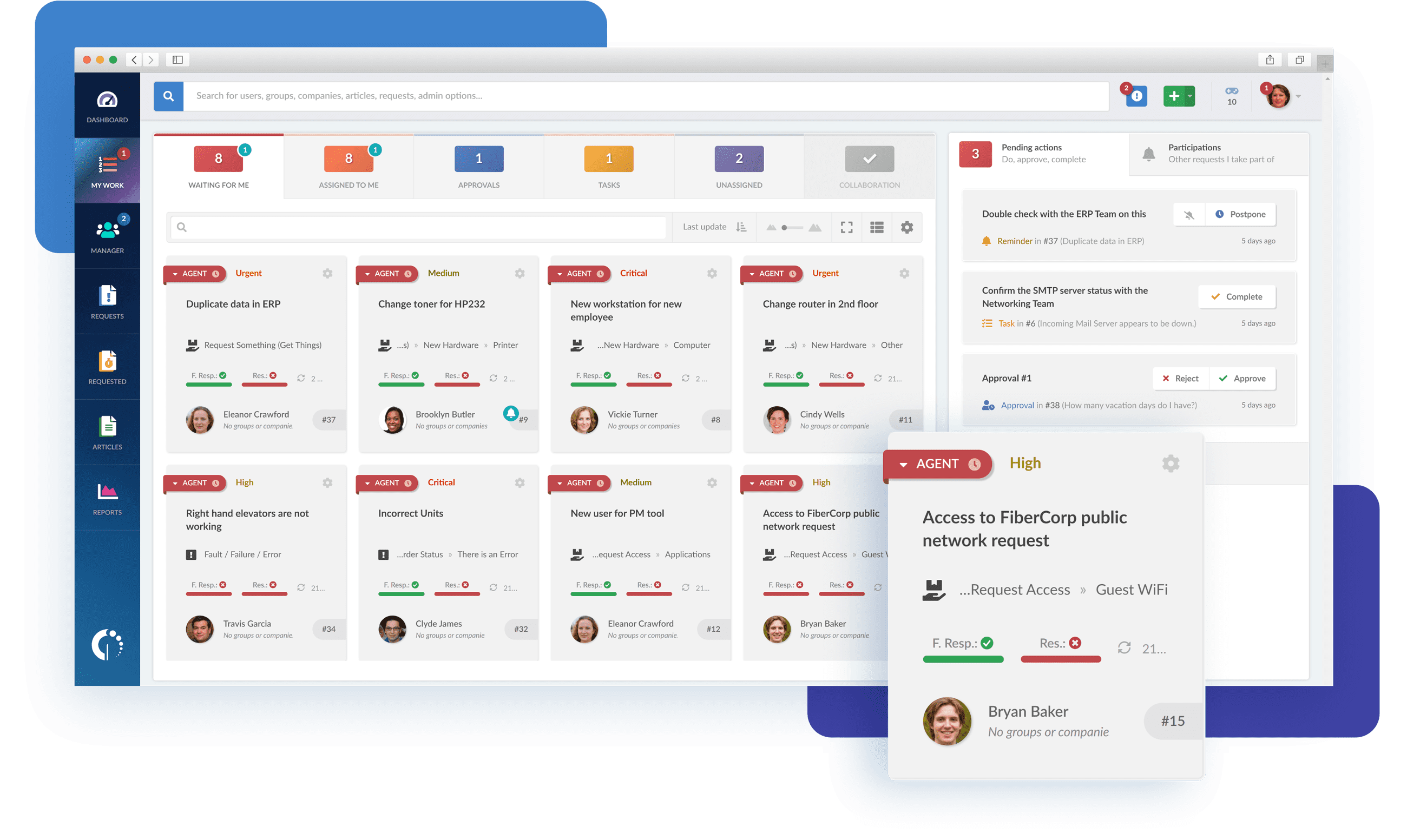
Prioritizing an exceptional user experience, InvGate Service Management adheres to meticulous design and UI/UX best practices. Its intuitive interface promotes quick adoption and minimizes the need for extensive training, resulting in a user-friendly design that maximizes productivity.
Flexibility and customization
Offering flexible deployment options, InvGate Service Management caters to the specific requirements of different sectors and industries. Organizations can choose between on-premise or cloud-based solutions, ensuring adaptability to their unique needs.
Powerful Ticketing and Incident Management
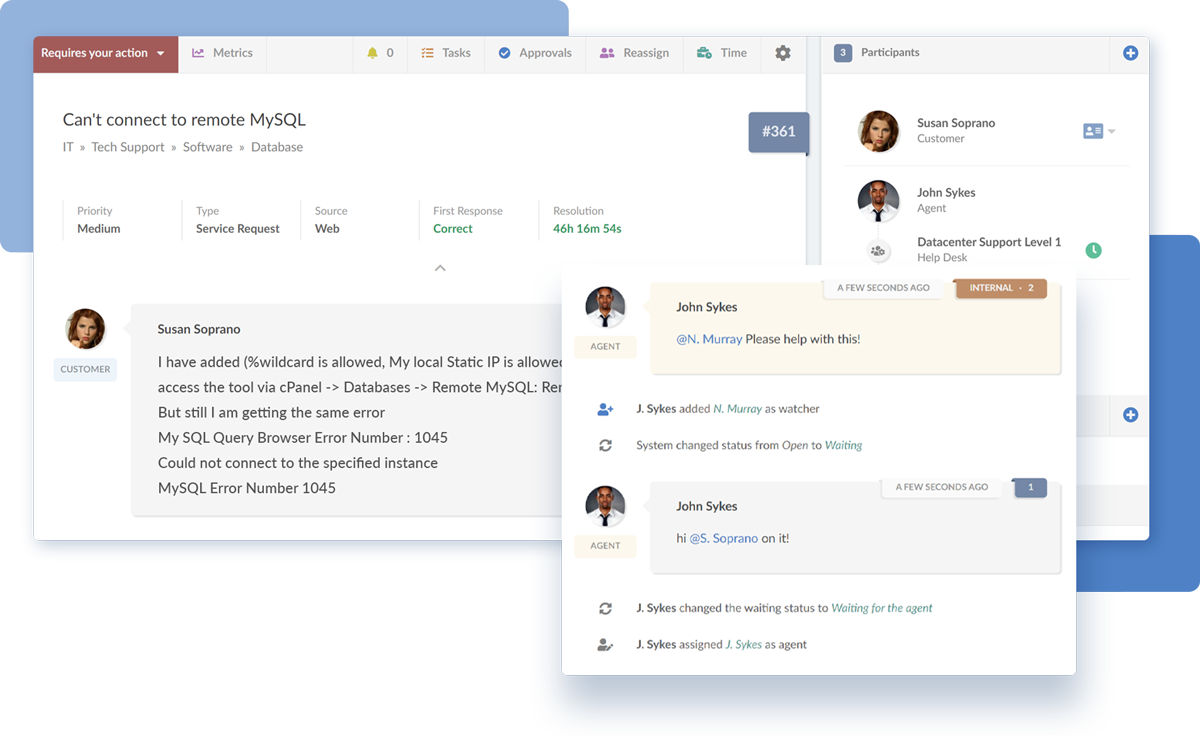
InvGate Service Management excels in delivering robust features for ticketing and incident management, facilitating efficient tracking, collaboration, and resolution of tickets. IT teams are empowered to handle and prioritize incidents effectively with automated ticket routing, customizable workflows, and SLA Management.
Comprehensive reporting and analytics
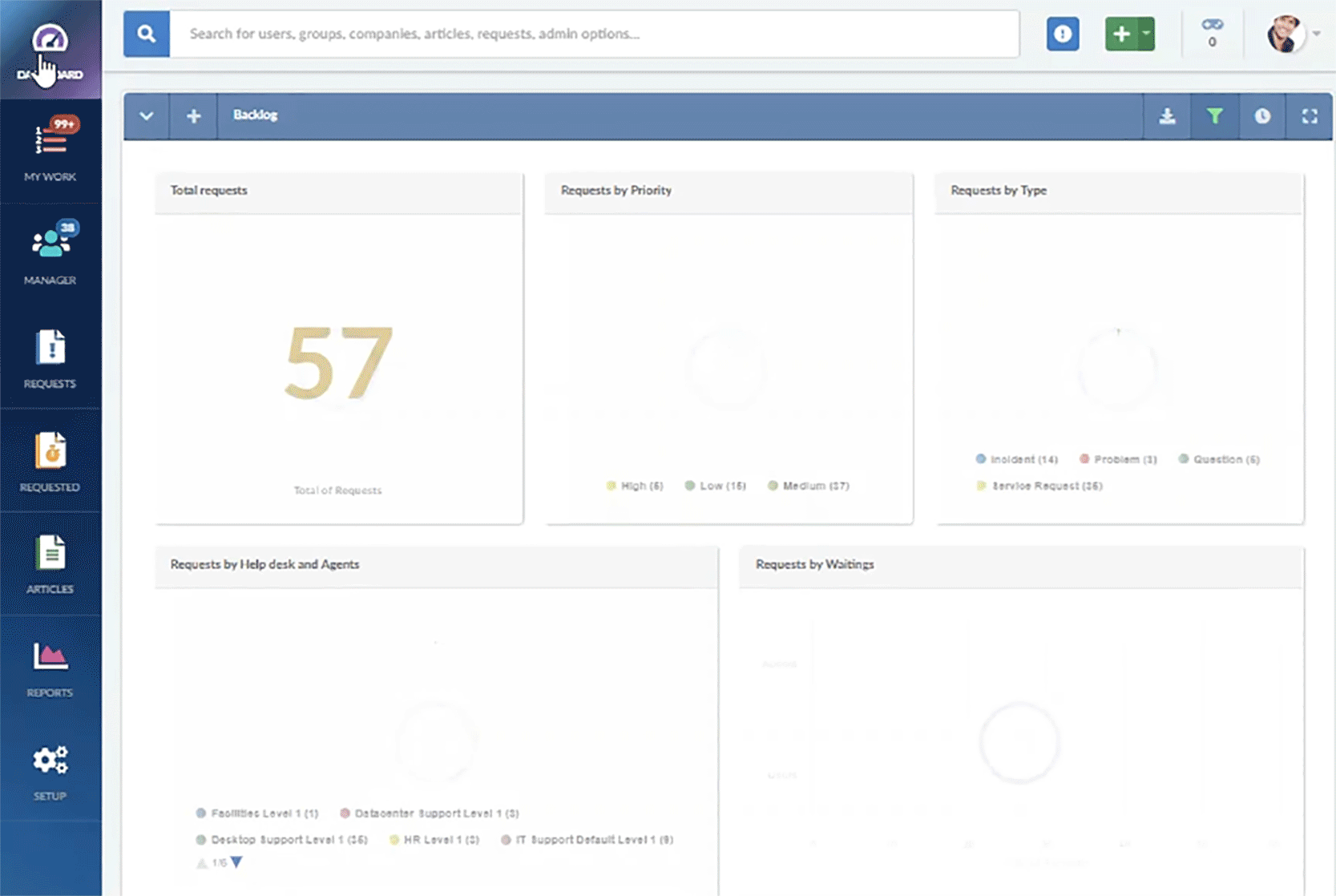
InvGate Service Management provides extensive reporting and analytics functionalities, offering valuable insights into IT operations and performance. With ready-to-use reports and customizable dashboards, IT teams can analyze data, identify patterns, and make informed decisions to enhance their services.
ITIL4 certified
With the esteemed ITIL4 certification from PINK Elephant, InvGate Service Management demonstrates its commitment to maintaining ITSM excellence. Whether organizations are starting their ITIL journey or managing intricate operations, InvGate Service Management provides a user-friendly and feature-rich experience aligned with industry best practices.
Comprehensive Asset Management
By integrating with InvGate Asset Management, InvGate Service Management offers a holistic view of the IT ecosystem, leading to improved service delivery and reduced downtime. InvGate Asset Management includes features like IT Asset Discovery, IT Inventory Management Software, Software License Management, and maintenance schedules.
Fast ROI and ongoing innovation
InvGate Service Management ensures a fast return on investment through efficient implementation processes. Within weeks, organizations can experience the benefits of this robust ITSM solution. Additionally, regular feature updates keep users at the forefront of technology without incurring additional costs.
Next steps
In the comparison of SysAid vs. Jira Service Management, both platforms have showcased their unique strengths and capabilities as competitive IT Service Management solutions.
However, there may be other alternatives that organizations should consider. One such option that merits attention is InvGate Service Management. With its emphasis on exceptional user experience, robust ticketing and Incident Management capabilities, strong self-service functionalities, and cost-effectiveness, InvGate Service Management presents a compelling choice for optimizing ITSM operations.
To further support the implementation of an effective ITSM solution, download our free ITSM implementation checklist. This comprehensive resource will guide you through the necessary steps to map out a successful implementation strategy, ensuring a smooth transition and maximizing the benefits of your chosen ITSM platform.
















